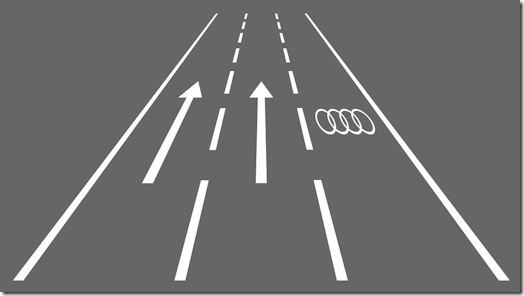
It’s funny, but ever since I became a driving instructor I have often explained to my pupils about the “caterpillar effect” on motorways. This is where you will be travelling along at a steady 60 or 70mph, suddenly to be faced with a wall of traffic at a complete standstill. You’ll be wondering what has happened – and be lucky if you move more than a few metres over the next 10 minutes or more – when suddenly everything starts moving again and there’s no sign of what might have caused it. Then, if you’re on a long journey, it could happen again some time later – perhaps several times. It’s like a huge caterpillar, in the sense that you have chunks of motorway moving freely, and others at a standstill, and these alternate along the network – just like a caterpillar moves.
What causes it is people not driving either at the speed limit, or exceeding it, by more than about 10mph either way. A slower driver will cause cars behind to have to slow down, and the laws of physics mean that each car slows down a little more than the one in front, so eventually someone has to stop. It might only be for a second, but the same laws of physics then mean that each subsequent car stops for longer. It happens both when a normal driver encounters a slower one, or when a speeder encounters a normal driver.
Obviously, less confident drivers will usually be in one of the inner lanes, and the faster ones in the outer lanes. It usually starts in the Audi lane (the one on the far right), and then quickly spreads as the Audi (or BMW) driver moves over to try and get past, and begins to encounter all the Miss Daisys on the opposite side.
Now, to me, the most obvious fix would be to ban Audis, BMWs, and old people from the motorways. Then we could all drive at 60 or 70mph in peace. But the Americans reckon that Adaptive Cruise Control (ACC) would address the problem better.
In the USA, they use the term “phantom traffic jam” – a term I can’t get my head around, because the traffic jam is actually very real when you encounter one, and it has been caused by the very real situation of people driving badly. The article I’ve linked to says that drivers cause the problem themselves due to their “delayed reactions having a ripple effect”. It’s a rather naïve and politically-correct assessment, since I’ve already pointed out quite correctly that it is mismatched speeds that are the problem and, if anything, it is over-reaction, lack of experience, and bad attitude which causes it. In other words, crap drivers.
ACC uses radar to detect what’s in front of it and adjusts the car’s speed accordingly. Hopefully, it is a few notches better than reversing sensors which are great both at detecting things which aren’t important (blades of grass and twigs on bushes), and missing things which are (lorries, metal barriers, and other big heavy things which are not in the sensor plane).
Given that the typical Audi driver is likely to set their standard cruise control at 90mph, I suspect they’d be switching ACC off the minute it tried to take them below 80mph.
I still think my solution would work best.